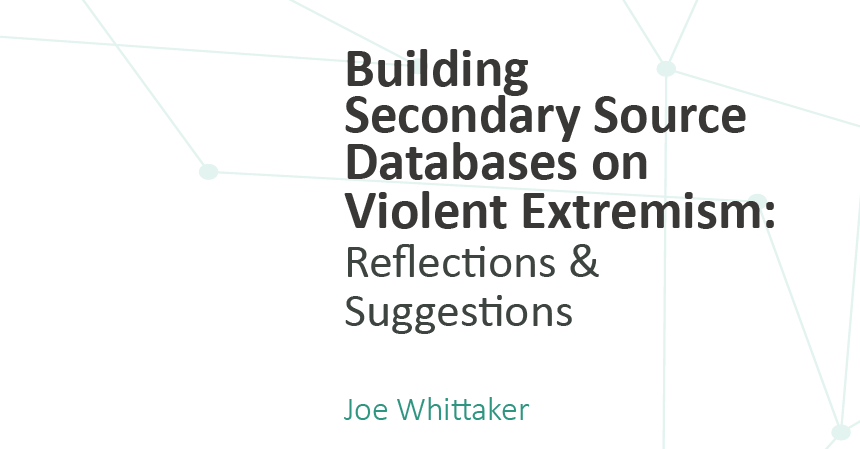Building Secondary Source Databases on Violent Extremism: Reflections and Suggestions

Abstract
It is often argued that a limitation to studying and challenging violent extremism (VE) is a lack of data--extremists are a difficult research population to engage in primary research. However, proponents of this argument miss the wealth of rich, secondary data available. This chapter offers a reflective analysis of creating a database of violent extremists exclusively via secondary sources, including:
- Considerations relating to finding appropriate sources to collect data and the merits and limitations of different sources. While there is an abundance of rich data, discerning how and where to find it, as well as judging between conflicting sources, can be challenging;
- The difficulties in identifying robust inclusion and exclusion criteria. Parsing through what constitutes membership in VE groups, how to define VE, what constitutes specific geographic or temporal zones, etc., is made more challenging given the nebulous nature of terrorism and violent extremism.
- The development of a codebook that both draws from previous literature and creates new avenues for future research;
- Selecting and undertaking quantitative and qualitative analysis appropriate for the data at hand; and,
- Ethical issues surrounding the collection and storing of personal data, as well as the potential naming of violent extremists as part of the research.
This analysis draws from the author’s doctoral research, in which he created a database of Daesh actors within America. The hope is that the reflections of both the successes and failures of his own research can offer guidance for those that seek to undertake similar studies.
Suggested citation:
Whittaker, Joe. Building Secondary Source Databases on Violent Extremism: Reflections and Suggestions. Washington, D.C.: RESOLVE Network, 2019. https://doi.org/10.37805/rve2019.4.